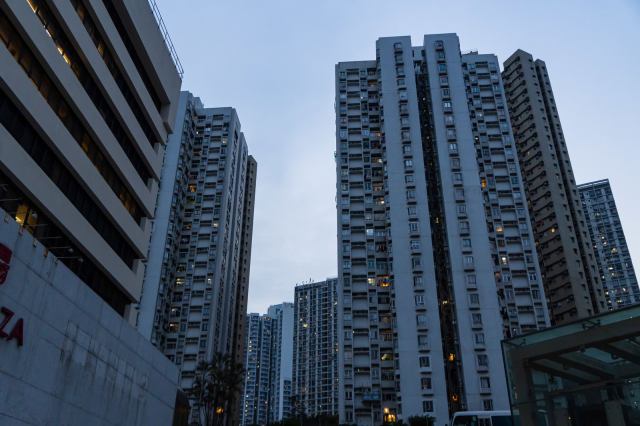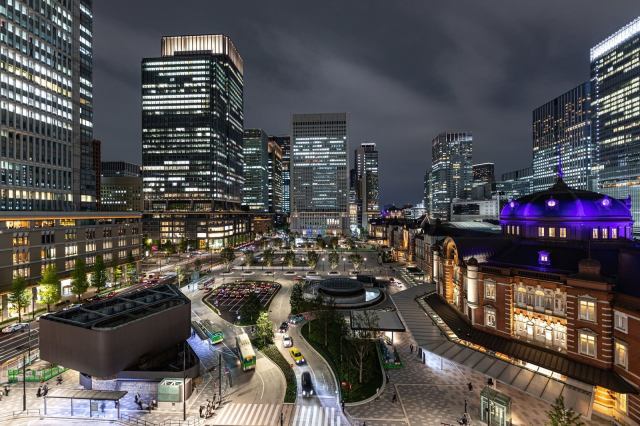
Prices for those who want to live in new housing in one of the 23 special wards hit an all-time high.
In a recent research study, Japan’s Real Estate Economic Institute found that the average price of newly constructed apartments (usually known as “mansion” in Japanese) that were sold in the 23 special wards of Tokyo last year was 114.83 million yen (US$774,909.70). That number surpasses 100 million yen for the first time ever and is also up a staggering 39.4 percent more than the year before last.
The jump in price is attributed to increased construction costs due to a sharp rise in the price of building materials as well as many new buildings being built in succession within the convenience of the special wards. There has also been increased demand to buy properties while interest rates remain low.
As one example, in Tokyo’s Takadanobaba neighborhood, a 13-floor building that’s a 7-minute walk from Takadanobaba Station is expected to be completed next year. Out of a total of 325 units, 85 of them went on the market in November–of which 70 units surpassed the 100 million yen price tag. Researchers attribute a large proportion of these buyers to be couples who both work and prioritize urban accessibility, enough space to work remotely from home at times, and communal spaces such as leisure areas on the roof.
▼ Living in one of Tokyo’s 23 special wards, which form the “heart” of Tokyo, is undeniably convenient but will leave a big hole in your wallet.
Furthermore, last year the average price of a new apartment in the combined capital region–Tokyo, Kanagawa, Saitama, and Chiba prefectures–was 81.01 million yen, which is up 28.8 percent from the previous year and makes it the highest ever recorded for the third year in a row.
Here’s some more specific data about the individual prefectures:
While Kanagawa experienced the second highest spike in prices after the 23 special wards of Tokyo, Saitama was the only prefecture where prices actually dropped.
For this year, the Institute predicts that prices for newly built apartments will continue to stay at a high level. While the peak of sales has passed, construction costs are expected to rise as the price of labor increases, largely as a result of laws limiting overtime work in the construction industry beginning to be enforced in April.
For anyone who’s currently looking for a place to live in the Greater Tokyo Area and doesn’t need a brand-new apartment, we encourage you to check out these affordable neighborhoods that have proven popular with Japanese renters in recent years.
Source: NHK News Web
Top image: Pakutaso
Insert image: Pakutaso
● Want to hear about SoraNews24’s latest articles as soon as they’re published? Follow us on Facebook and Twitter!



 The top ten most appealing of Tokyo’s 23 special wards to live in after retirement
The top ten most appealing of Tokyo’s 23 special wards to live in after retirement Roughly one in eight of Tokyo’s new adults is foreign-born, study shows
Roughly one in eight of Tokyo’s new adults is foreign-born, study shows Medical bills to be free in all Tokyo wards for high school students, younger kids from next year
Medical bills to be free in all Tokyo wards for high school students, younger kids from next year Highest-ever Tokyo homes announced, will be as far from the street as tip of Tokyo Tower
Highest-ever Tokyo homes announced, will be as far from the street as tip of Tokyo Tower How much money do you need for a studio apartment in downtown Tokyo?
How much money do you need for a studio apartment in downtown Tokyo? Japan’s new difficult-to-drink-from beer glass protects your liver, but it’s a brutal experience
Japan’s new difficult-to-drink-from beer glass protects your liver, but it’s a brutal experience Demon Slayer: Kimetsu no Yaiba gets new roller coaster attractions and food at Universal Studios Japan
Demon Slayer: Kimetsu no Yaiba gets new roller coaster attractions and food at Universal Studios Japan Come play hide-and-seek on a deserted Japanese island this August and November
Come play hide-and-seek on a deserted Japanese island this August and November New Pokémon ice cream, dessert drinks, and cool merch coming to Baskin-Robbins Japan【Pics】
New Pokémon ice cream, dessert drinks, and cool merch coming to Baskin-Robbins Japan【Pics】 How to order snacks on a Shinkansen bullet train in Japan
How to order snacks on a Shinkansen bullet train in Japan New samurai glasses are Japan’s latest weird must-have souvenir
New samurai glasses are Japan’s latest weird must-have souvenir Burger King Japan suddenly adds Dr. Pepper and Dr. Pepper floats to its menu nationwide
Burger King Japan suddenly adds Dr. Pepper and Dr. Pepper floats to its menu nationwide New Japanese rice cooker cuts carbohydrates at the push of a button
New Japanese rice cooker cuts carbohydrates at the push of a button Turns out you can draw all four original starter Pokémon with just three colored pencils【Video】
Turns out you can draw all four original starter Pokémon with just three colored pencils【Video】 New Nintendo Lego kit is a beautiful piece of moving pixel art of Mario and Yoshi【Photos】
New Nintendo Lego kit is a beautiful piece of moving pixel art of Mario and Yoshi【Photos】 Nintendo history you can feel – Super NES, N64, and GameCube controllers become capsule toys
Nintendo history you can feel – Super NES, N64, and GameCube controllers become capsule toys Hello, cosmetics! Clinique teams up with Hello Kitty this summer for first-time collaboration
Hello, cosmetics! Clinique teams up with Hello Kitty this summer for first-time collaboration “The most Delicious Cup Noodle in history” – Japan’s French Cup Noodle wins our heart【Taste test】
“The most Delicious Cup Noodle in history” – Japan’s French Cup Noodle wins our heart【Taste test】 Starbucks releases a cute Frappuccino and Unicorn Cake…but not in Japan
Starbucks releases a cute Frappuccino and Unicorn Cake…but not in Japan Kyoto Tower mascot termination reveals dark side behind cute Japanese characters
Kyoto Tower mascot termination reveals dark side behind cute Japanese characters McDonald’s Japan’s Soft Twist Tower: A phantom ice cream only sold at select branches
McDonald’s Japan’s Soft Twist Tower: A phantom ice cream only sold at select branches Yabai Ramen: What makes this Japanese ramen so dangerous?
Yabai Ramen: What makes this Japanese ramen so dangerous? Finally! Nintendo Japan expands Switch 8-bit controller sales to everybody, Online member or not
Finally! Nintendo Japan expands Switch 8-bit controller sales to everybody, Online member or not Japanese government wants to build luxury resorts in all national parks for foreign tourists
Japanese government wants to build luxury resorts in all national parks for foreign tourists To combat declining birth rate, Japan to begin offering “Breeding Visas” to foreigners
To combat declining birth rate, Japan to begin offering “Breeding Visas” to foreigners 10 things you should buy at 7-Eleven in Japan
10 things you should buy at 7-Eleven in Japan Studio Ghibli releases anime heroine cosplay dresses that are super comfy to wear
Studio Ghibli releases anime heroine cosplay dresses that are super comfy to wear Woman charged for driving suitcase without a license in Osaka
Woman charged for driving suitcase without a license in Osaka Studio Ghibli unveils My Neighbour Totoro miniature house model
Studio Ghibli unveils My Neighbour Totoro miniature house model Kyoto experiencing problems with foreign tourists not paying for bus fares, but not on purpose
Kyoto experiencing problems with foreign tourists not paying for bus fares, but not on purpose Fighting mild hunger with a Japanese soda that turns into jelly in the stomach【Taste test】
Fighting mild hunger with a Japanese soda that turns into jelly in the stomach【Taste test】 Studio Ghibli’s Howl’s Moving Castle tapestry unveiled in Japan for first time
Studio Ghibli’s Howl’s Moving Castle tapestry unveiled in Japan for first time McDonald’s new Happy Meals offer up cute and practical Sanrio lifestyle goods
McDonald’s new Happy Meals offer up cute and practical Sanrio lifestyle goods Sales of Japan’s most convenient train ticket/shopping payment cards suspended indefinitely
Sales of Japan’s most convenient train ticket/shopping payment cards suspended indefinitely Sold-out Studio Ghibli desktop humidifiers are back so Totoro can help you through the dry season
Sold-out Studio Ghibli desktop humidifiers are back so Totoro can help you through the dry season Japanese government to make first change to romanization spelling rules since the 1950s
Japanese government to make first change to romanization spelling rules since the 1950s Foreigner’s request for help in Tokyo makes us sad for the state of society
Foreigner’s request for help in Tokyo makes us sad for the state of society Ghibli founders Toshio Suzuki and Hayao Miyazaki contribute to Japanese whisky Totoro label design
Ghibli founders Toshio Suzuki and Hayao Miyazaki contribute to Japanese whisky Totoro label design Doraemon found buried at sea as scene from 1993 anime becomes real life【Photos】
Doraemon found buried at sea as scene from 1993 anime becomes real life【Photos】 Tokyo’s most famous Starbucks is closed
Tokyo’s most famous Starbucks is closed Princesses, fruits, and blacksmiths: Study reveals the 30 most unusual family names in Japan
Princesses, fruits, and blacksmiths: Study reveals the 30 most unusual family names in Japan 11 cheapest Tokyo neighborhoods to rent an apartment in show living here’s not an impossible dream
11 cheapest Tokyo neighborhoods to rent an apartment in show living here’s not an impossible dream Magazine survey picks Japan’s 10 best towns to live in
Magazine survey picks Japan’s 10 best towns to live in Japan’s foreign population reaches historic milestone following largest-ever single-year surge
Japan’s foreign population reaches historic milestone following largest-ever single-year surge Living with ghosts: The rising popularity of ‘death rooms’ in Japan
Living with ghosts: The rising popularity of ‘death rooms’ in Japan Traveling in Tokyo? You can start enjoying cheaper taxi rides as of today!
Traveling in Tokyo? You can start enjoying cheaper taxi rides as of today! Top 10 areas in Japan’s capital region where women who live on their own want to live
Top 10 areas in Japan’s capital region where women who live on their own want to live Japan now has over 40,000 foreign convenience store clerks as it continues to internationalize
Japan now has over 40,000 foreign convenience store clerks as it continues to internationalize Author breaks down economics of anime, tells us exactly what Sailor Moon’s house is worth
Author breaks down economics of anime, tells us exactly what Sailor Moon’s house is worth Apartments with no bath or shower rising in popularity among young Tokyoites, report says
Apartments with no bath or shower rising in popularity among young Tokyoites, report says When do Japanese women have their first kiss? Survey finds gap between different parts of Japan
When do Japanese women have their first kiss? Survey finds gap between different parts of Japan Neighbors Kamikitazawa introduces us to the cool side of shared Tokyo apartment rentals
Neighbors Kamikitazawa introduces us to the cool side of shared Tokyo apartment rentals 3-D printing a house in less than 24 hours — Japanese company meets its goal
3-D printing a house in less than 24 hours — Japanese company meets its goal Getting married? Love video games? Why not hold your wedding at this Tokyo video arcade!
Getting married? Love video games? Why not hold your wedding at this Tokyo video arcade! Mujirushi’s Japanese micro-houses are finally on sale to the general public!
Mujirushi’s Japanese micro-houses are finally on sale to the general public! Is 150,000 yen (US$1,389) a month enough to live on in Tokyo? Depends what kind of life you want
Is 150,000 yen (US$1,389) a month enough to live on in Tokyo? Depends what kind of life you want Yamagata cherries fetch record-breaking price at wholesale market’s first auction of the year
Yamagata cherries fetch record-breaking price at wholesale market’s first auction of the year
Leave a Reply